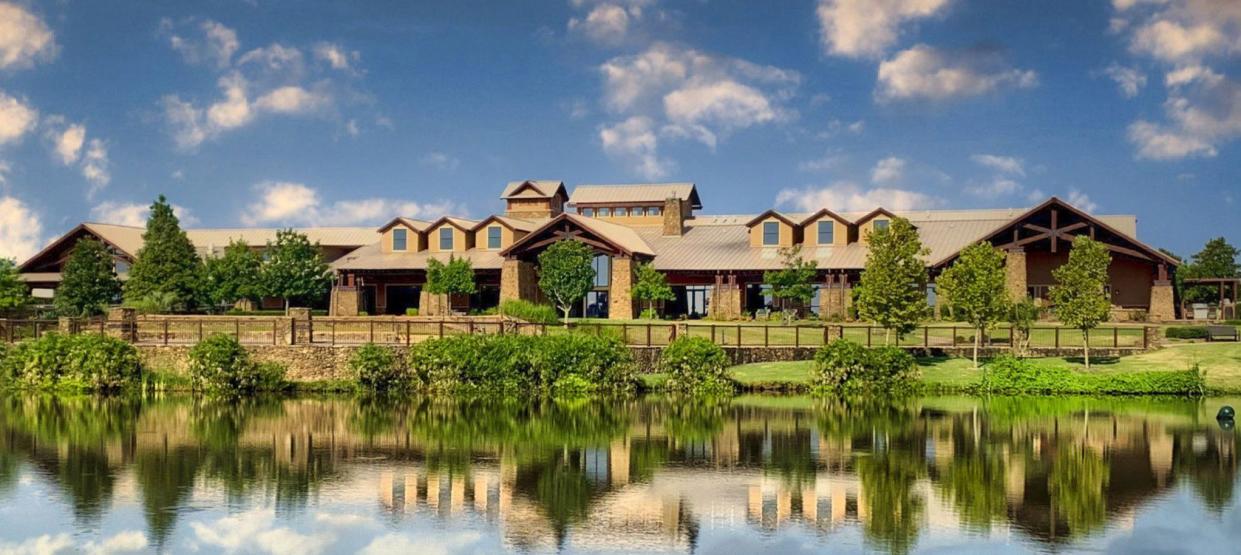How To Make Changes to Your 401(k) Contributions

Whether you just set up your 401(k) plan or you established one long ago, you may want to change the amount of your contributions — or even how they’re invested. Fortunately, it’s usually a fairly straightforward process to change 401(k) contributions.
How often can you change your 401(k) contributions? You may be able to make changes at any time, depending on your plan. After all, the point of a 401(k) plan is to help you save for your retirement. So it’s important to keep an eye on your account and your investments within the account, to make sure that you’re saving and investing according to your goals.
Purpose of a 401(k)
A 401(k) is a retirement account that a company may offer to its employees. In some cases, enrollment in the employer’s 401(k) is automatic; in other cases it’s not. Be sure to check, so that you can take advantage of this savings opportunity.
Employees may contribute a portion of their paycheck to their 401(k) account, and employers might also contribute to each employee’s account (again, depending on the plan).
The employer’s portion is called the company’s “match” or matching funds. Typically, an employer might match up to a certain percentage of what the employee saves. One common matching plan is when a company matches 50 cents for every dollar saved, up to 6% of the employee’s total contributions. Terms vary, so it’s best to ask your Human Resources representative what the match is.
The money a participant contributes to their 401(k) plan is technically called an “elective salary deferral” because it’s optional, not required, and those deductions are not included in an employee’s taxable income. That’s why 401(k) and similar accounts (like a 403(b) and most IRAs) are often called tax-deferred accounts: You don’t pay taxes on the money you’ve saved until you withdraw the money in retirement.
This tax benefit can be significant. Every dollar you save reduces your taxable income, which may result in a lower tax bill in some cases.
Can You Change Your 401(k) Contribution at Any Time?
While the opportunity to make changes to some employee benefits, like health insurance, are generally only offered once a year during so-called open enrollment periods, many 401(k) plans allow participants to change the amount of their 401(k) contributions at any point. According to Department of Labor guidelines, an employer must allow plan participants to change investments at least quarterly (sometimes more often, if company stock or other high-risk investments are offered by the plan).
These are some of the reasons you may want to change 401(k) contribution amounts.
The Ability to Save More
You may have gotten a raise, or experienced a change in your financial circumstances, and wish to increase the percentage of your savings. Contributions to these plans are typically expressed as a percentage of your annual salary. For example, if you earn $75,000 per year, and your contribution rate is 10%, you would save a total of $7,500 per year. If you got a raise to $80,000 and now wish to contribute 12%, you would save a total of $9,600 per year.
To Get the Match
As discussed above, some 401(k) plans offer a savings match from the employer. In most cases, the match is a set percentage of the employee’s contribution. If you started your 401(k) at a point when you couldn’t get the full match, you may want to increase your contributions to get the full employer match.
Rebalancing Your Asset Allocation
If you’ve held the account for a while, say a year or more, the original allocation of your investments — i.e. the balance between equities, cash, and fixed income investments — may have shifted. Restoring the original balance of your investments may be a priority, if your strategy and risk tolerance haven’t changed.
Changing Your Asset Allocation
You also might want to shift the asset allocation because your financial strategy has become more aggressive (i.e. tilting toward stocks) or more conservative (tilting toward cash and fixed income).
Setting Up Automatic Increases
Some plans offer participants the option of automatically increasing their contribution rate every year, typically up to a certain percentage (e.g. 15%), and not to exceed the maximum contribution levels. The IRS contribution limit for 401(k) plans for 2024 is $23,000 for participants under age 50. Those 50 and older can save an extra $7,500 in “catch-up contributions”, for a total of $30,500. For 2023, the contribution limit is $22,500 for participants under age 50. Those 50 and older can save an extra $7,500 in “catch-up contributions”, for a total of $30,000.
Setting up automatic increases allows you to save more in your 401(k) each year without having to think about it; this can be beneficial for overcoming the inertia common among some savers.
How to Change 401(k) Contributions: 3 Steps
Again, the 401(k) plan provider will be able to advise participants on how often they can make changes to their contributions, and what the process will look like. For employees unsure of who the plan provider is, the company’s human resource department can point them in the right direction.
In some cases, participants can change their contributions directly through their plan provider’s website. Generally, the process of making changes to a 401(k) looks like this:
Step 1:
The employee contacts their 401(k) provider to discuss how to change contributions for their particular 401(k) plan.
Step 2:
The employee considers how much of their paycheck they want to contribute to their 401(k) moving forward, taking their company’s 401(k) match into consideration, and ideally contributing at least that much. The employee might also change their asset allocation, depending on plan rules.
Step 3:
The participant fills out any forms (online or via paperwork) to confirm their new contribution.
Often, these steps can take just a few minutes, using your plan sponsor’s website.
Why Contribute to a 401(k)? 3 Good Reasons
Contributing to a 401(k) plan is an important way to save for retirement. The funds in a 401(k) are invested, generally in mutual funds, exchange-traded funds (ETFs), or target date funds — which can offer the potential for growth over time. Typically there are about eight to 12 investment options in most 401(k) plans.
But perhaps the three best reasons to contribute to a 401(k) plan are the opportunity to save automatically via regular payroll deductions; the potentially lower tax bill; and the ability to get “free money” from your employer match, if it’s offered.
Low-stress Saving
For many people, this type of investment is easy because you can choose how much of your salary to contribute each pay period, and deductions happen automatically. You don’t have to think about your savings, your contributions are taken directly from each paycheck, so it helps to build your nest egg over time.
Lower Taxable Income
Another benefit is the potential for savings during tax season. Since the contributions an employee makes to their 401(k) plan over the course of the year aren’t included in their taxable income, that can lower their overall taxable income. This, in turn, may result in an individual falling into a lower tax bracket and paying less income tax for that year.
And in the future, when they might likely be in a lower tax bracket due to retirement, they’ll pay lower taxes when they withdraw the money from their 401(k) account.
Another perk of enrolling in a 401(k) plan is the notion of “free money” from one’s employer. Some companies match a portion of their employees’ contributions — often around 50 cents to $1 for each dollar that an employee contributes.
Typically, an employer might set a maximum matching limit, such as 3% to 6% of the employee’s salary.
This matching contribution is often referred to as free money because the contribution effectively increases an employee’s income without increasing their current tax bill. It’s worth noting that an employer’s match generally vests over the course of three or four years — meaning that the employer-contributed money will accrue in the account, but an employee won’t be able to keep it if they switch jobs, unless they remain with the company for that set period of time.
Setting up Recurring Contributions
When it comes to setting up a 401(k), the process varies by workplace. Some companies offer automatic enrollment to employees, automatically reducing the employee’s wages by a certain amount and diverting that money to the employee’s 401(k) plan, unless the employee chooses not to have their wages contributed.
Or, an employee can choose to enroll, but to contribute a custom amount. This type of contribution is referred to as an elective deferral.
In companies that don’t offer automatic enrollment as an option, employees will need to work with their HR department and retirement plan provider to get their 401(k) set up.
Participants need to decide how much they want to contribute and they may need to choose their investments. They can also opt to take advantage of autopilot settings, and can roll over a 401(k) from a past job into their new one.
How Much to Save for Retirement
The Department of Labor (DOL) outlined a few best practices for investing in order to save for retirement.
It estimated that most Americans will need 70% to 90% of their preretirement income saved by retirement, in order to maintain their current standard of living. Doing that math can give plan participants an idea of how much they should be contributing to their 401(k).
Participants might also consider a few basic investment principles, such as diversifying retirement investments to reduce risk and improve return. These investment choices may evolve overtime depending on someone’s age, goals, and financial situation.
The DOL recommends that employees contribute all they can to their employer-sponsored 401(k) plan to take advantage of benefits like lower taxes, company contributions, and tax deferrals.
Adding Alternative Investments to a 401(k)
Some savers may find themselves interested in pursuing alternative investments when saving for retirement. An alternative investment takes place outside of the traditional markets of stocks, fixed-income, and cash. This method may appeal to those looking for portfolio diversification. Popular examples of alternative investments are private equity, venture capital, hedge funds, real estate, and commodities.
Self-directed 401(k)s allow participants to add alternate investments to their 401(k) portfolio. With a self-directed 401(k), the investor chooses a custodian such as a brokerage or investment firm to hold the amount of assets and execute the purchase or sale of investments on the participant’s behalf. If an employer offers a self-directed 401(k), the custodian will likely be the plan administrator.
The Takeaway
For employees looking to change 401(k) contributions, the process is often as simple as reaching out to your plan provider and confirming that you’re allowed to make a change at this time.
Some companies have rules around when and how often employees can make changes to their contributions. Once you have the go-ahead to make the change, and have considered what works best for your current financial situation and your future goals, it’s generally straightforward.
A company-sponsored 401(k) plan offers many benefits, but once you leave your job, many of those benefits — including the employer-matching program — no longer apply. At that point, you may want to consider doing a rollover of your previous 401(k) to an IRA, so you can remain in control of your money.
This article originally appeared on SoFi.com and was syndicated by MediaFeed.org.
INVESTMENTS ARE NOT FDIC INSURED • ARE NOT BANK GUARANTEED • MAY LOSE VALUE
SoFi Invest encompasses two distinct companies, with various products and services offered to investors as described below: Individual customer accounts may be subject to the terms applicable to one or more of these platforms.
1) Automated Investing and advisory services are provided by SoFi Wealth LLC, an SEC-registered investment adviser (“SoFi Wealth“). Brokerage services are provided to SoFi Wealth LLC by SoFi Securities LLC.
2) Active Investing and brokerage services are provided by SoFi Securities LLC, Member FINRA (www.finra.org)/SIPC(www.sipc.org). Clearing and custody of all securities are provided by APEX Clearing Corporation.
For additional disclosures related to the SoFi Invest platforms described above please visit SoFi.com/legal.
Neither the Investment Advisor Representatives of SoFi Wealth, nor the Registered Representatives of SoFi Securities are compensated for the sale of any product or service sold through any SoFi Invest platform.
Investment Risk: Diversification can help reduce some investment risk. It cannot guarantee profit, or fully protect in a down market.
An investor should consider the investment objectives, risks, charges, and expenses of the Fund carefully before investing. This and other important information are contained in the Fund’s prospectus. For a current prospectus, please click the Prospectus link on the Fund’s respective page. The prospectus should be read carefully prior to investing.
Alternative investments, including funds that invest in alternative investments, are risky and may not be suitable for all investors. Alternative investments often employ leveraging and other speculative practices that increase an investor's risk of loss to include complete loss of investment, often charge high fees, and can be highly illiquid and volatile. Alternative investments may lack diversification, involve complex tax structures and have delays in reporting important tax information. Registered and unregistered alternative investments are not subject to the same regulatory requirements as mutual funds.
Please note that Interval Funds are illiquid instruments, hence the ability to trade on your timeline may be restricted. Investors should review the fee schedule for Interval Funds via the prospectus.
Exchange Traded Funds (ETFs): Investors should carefully consider the information contained in the prospectus, which contains the Fund’s investment objectives, risks, charges, expenses, and other relevant information. You may obtain a prospectus from the Fund company’s website or by email customer service at investsupport@sofi.com. Please read the prospectus carefully prior to investing.
Shares of ETFs must be bought and sold at market price, which can vary significantly from the Fund’s net asset value (NAV). Investment returns are subject to market volatility and shares may be worth more or less their original value when redeemed. The diversification of an ETF will not protect against loss. An ETF may not achieve its stated investment objective. Rebalancing and other activities within the fund may be subject to tax consequences.
More from MediaFeed:
Luxurious Retirement Communities That Make Retirement Feel Like Vacation

You've worked hard, and now it’s time to live the luxury retirement lifestyle you’ve wanted. Imagine waking up each morning to stunning views of the mountains or the ocean. Perhaps you’ll spend your days lounging by the pool or taking walks through impeccably landscaped gardens.
If this sounds like retirement heaven to you, consider moving to one of America's most luxurious retirement communities.
From picturesque settings in the countryside to vibrant city neighborhoods, there's a perfect setting for every senior. And these are the most luxurious retirement communities in America.
Here are some of our favorites.

If you're looking for a luxurious retirement community in the Tucson area, The Preserve at SaddleBrooke is worth considering.
One can find the SaddleBrooke in the northwest suburban area of Tucson. This community is age restricted, and residents must be at least 55 of age.
You can find it on the scenic slopes of the Catalina Mountains; this community offers residents stunning views and plenty of opportunities for outdoor recreation.
The Preserve is also home to a world-class golf course and an award-winning spa. If that's not enough, there are also plenty of social activities available, so you'll never be bored.
The community offers refined amenities and upscale homes, making it one of Arizona's most luxurious retirement communities.
robson.com
This Del Webb retirement home is the Village at Deaton Creek in Hoschton, Georgia. It has a 35,000 square-foot clubhouse that is the center of the community.
This 55+ community has many amenities to keep residents busy, including a state-of-the-art fitness center, an indoor and outdoor pool, tennis courts and a walking trail.
The facility offers a variety of recreational activities and amenities for residents, including a spacious swimming pool with a resort-style bathhouse and an art room. Residents can also participate in organized day trips to Atlanta's downtown area.
It has around 1,100 houses costing anywhere from the upper $200,000s to the mid $600,000s.
Village at Deaton Creek / YouTube
Atria West 86 is a luxurious apartment complex on the Upper West Side of New York City. It's one block from Riverside Park and in an area known for its extravagance.
This luxurious retirement complex is ideally situated and all-inclusive. Designed with luxury in mind, this beautiful Manhattan residence makes it simpler for older New Yorkers to live in the city's artistic and cultural center.
Residents may dine from breakfast through late at night, with table service, 24-hour doorman and concierge, housekeeping and linen services available around the clock. Yoga, pottery classes, guest speakers and writing workshops are among the other activities offered.
Suppose you crave access to the finest accommodations in this country's most glamorous city. In that case, you cannot miss community. The apartments in this luxurious retirement facility starts at $7,500 a month.
atriaseniorliving.com
Dell Webb Sweetgrass offers a multi-million-dollar, state-of-the-art amenity center, indoor and outdoor pools, fitness center, walking trails and many outdoor facilities. Additionally, you'll discover 500 acres of land representing 1,500 home sites.
Prices range from the low $200,000s to the $400,000s.
Residents may meet their nature requirements by walking miles of pathways and other outside amenities.
The 27,000-square-foot clubhouses are located in the center of the facility and contain a variety of facilities, including gaming and dining areas and socializing areas for residents.
mysweetgrass.net
The Sun City Hilton Head retirement community is in Bluffton, South Carolina, part of the Del Webb chain. It's the most significant active retirement facility for seniors in the Lowcountry region.
The community's centerpiece is an amenity campus with dining, swimming, game areas and socializing areas.
This community has won multiple awards for being a great place to live an active lifestyle. It has more than 9,000 homes, making it one of the largest age-restricted communities in the state.
The cost of living here is a bit higher than average, with homes prices ranging from the mid-$200,000s to well over $1 million.
There are seven-and-a-half miles of walking and biking trails with views of local swamps and three modern fitness centers. If you are looking for a retirement community with plenty of activities to keep you busy, this is your place.
Sun City Hilton Head / Facebook
If you're searching for a spot to enjoy the SoCal lifestyle in Orange County, Laguna Woods Village is one of California's most desirable retirement communities.
The community consists of 12,736 homes with more than 18,500 residents. The best part of this community is that you can spend your golden years in a calm environment just minutes from the ocean!
Some homes start in the low $200,000s; however, the most expensive homes sell for over $1 million.
The community has an art center, a theater and a performing arts center. There are also plenty of outdoor activities, like 36 holes of premium golfing, pickleball and bocce ball.
This community is one of the most luxurious retirement communities on the list if you are looking for a retirement community that has it all.
lagunawoodsvillage.com
Lake Providence is a small, gated community near Nashville, with just over 1,000 properties priced from the mid-$300,000s to almost $700,000.
The area was first opened in the late 1830s surrounding Lake Providence.
The resident lifestyle director encourages residents to socialize by organizing community and personal gatherings.
Also, residents have access to swimming, dining, play and a healthy lifestyle within the community, and there are several nearby historical sites to explore.
dwlphoa.com
For active retirees looking for a luxurious place to retire, The Villages has it all, from modest patio villas to stunning four-bedroom residences.
Residents of the community enjoy complimentary access to all golf courses, country clubs and a variety of fitness and recreational facilities.
Several businesses, restaurants and even a performing arts center provide enough to do for seniors who enjoy being busy while still maintaining a high standard of living. The properties start in the high $100,000s and go upwards of $1 million.
If you are looking for a retirement community that is both luxurious and affordable, The Villages can be the perfect place for you.
thevillages.com
Luxurious retirement communities offer seniors a wide range of amenities and services. These communities provide an unparalleled lifestyle, from activities that include expansive golf courses to resort-style pools. In addition, many of these communities offer residents access to world-class healthcare facilities and top-notch dining options.
With so much to offer, it's no wonder that luxury retirement communities are becoming increasingly popular among seniors. If you are a senior looking for an active lifestyle, these retirement communities are worth considering.
Tips for retirement planning
Need help planning for retirement? You can use free retirement calculators to help you start planning at any age.
This article was produced and syndicated by MediaFeed.
DepositPhotos.com
